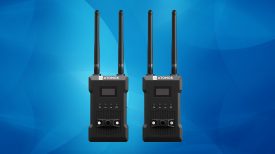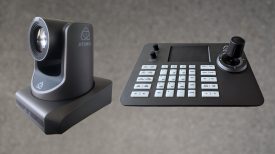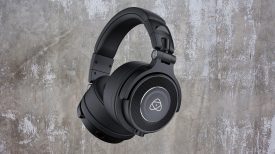Interview by features editor Mat Gallagher:
Cabela’s “It’s In Your Nature” Brand Anthem from Tyler Stableford on Vimeo.
Photographer, cinematographer and director, Tyler Stableford, like many others, started shooting video in 2009 after the release of the EOS 5D MkII. Over the last three years it has completely changed his business and landed him some big name clients but he’s still a storyteller at heart. I met up with Tyler at this year’s NAB show for a brief chat about his work.
How would you describe what you do?
Essentially I own a production company. I have four employees but until recently it used to just be me and an assistant doing photography, so I’m still in this ‘transition’. Our company is growing, mostly due to the success of video. As a production company, some of us are taking on different projects with clients simultaneously, and our mission is to tell soulful stories. Mostly we do commercials for our clients – we have to make a living – but whenever we can, we share short stories and films that way. That’s at the core of what we like to do; stills and video, sharing the soul of the company’s brand.
Are you still doing both film and stills?
Yeah, last year (2012) maybe 60% of my income or more was through video. It was unexpected that it grew so rapidly in the course of a few short years. In 2010 I think I was self-funding video just to have a folio of work and now it’s happening so quickly. I directed my first national television campaign this fall, and I’m working on a great range of projects from small to big, it’s very exciting.
Cabela’s “Camping Dreams” :30 TV Commercial from Tyler Stableford on Vimeo.
So would you describe yourself now as a cinematographer or just an image maker?
Yeah, I guess I class myself as a Photographer, Director, cinematographer.
How long have you been a stills photographer?
I’ve been in professional stills since I was about 21 or so, starting slow as anyone starts. I was a magazine journalist and writer, for Climbing Magazine and Rock and Ice, I worked there for 7 years, starting as a freelance writer, and picked up a camera through the years. Over time photography became a larger force in my life and I went full time with it and dropped any of the writing things in 2004. Then in 2009 I started shooting my first video for work, essentially when the 5D MkII came out.
So your latest project was directing the Cabela’s campaign?
That was something we worked with that had a great story. Essentially Cabela’s is a $2bn publicly traded company and had kind of been a sleeper, in the sense that they hadn’t had a strong brand campaign or anthem about their brand. They asked me to direct their brand anthem, and with it a series of ten separate 15second spots that would run for the next two years. So we have a 60second spot, which is the brand anthem with these 12 locations around the country. From that they want a handful of 15-30 second TV spots from each location that they can use for any range of things: camping, hunting, fishing, and any iterations there of; just soulful moments in the outdoors, like father and daughter fishing and camping. That’s been a big thrill for me. The main thing is I got to work with a range of really talented directors of photography, high-level thinkers in the creative team, and a great crew. I detached my self a bit, by necessity, from figuring out the technical stuff, like the focus marks on the camera. We worked with the 5D to find the framing and the exact mood, then I would direct the actors, and that was really fun.
Valley Settlement Project-The Manaus Fund from Tyler Stableford on Vimeo.
Can you explain a little about the non-profit work that you do?
I’m deeply connected to that and it still excites me as much as any thing we do. We did a two to three week non-profit piece in my hometown of Colorado and we’re just finishing it, literally this week. It’s a five minute promotional video on a non-profit called the Valley Settlement Project that’s essentially helping poor migrants to integrate more rapidly, and more successfully, into the community and into the school system. In Colorado we have a lot of Latino and Mexican immigrants coming in, and they don’t speak the language well, but they’ve come here because they’re seeing some of the greatest hardships in life that you can imagine. Essentially they’re starving in Mexico and they’ve come here, legally or illegally, hoping for what we all hope for – a better life for themselves and their children. This project is helping accelerate their integration through pre-school with accelerated English learning, both for the kids before they enter kindergarten, and for the parents so they meet their mentors; programs that get the parents involved in the schools of their kids; and after-school programs for kids, to accelerate their learning so they’re not holding back in school. It’s really powerful and I think, as America is an immigrant country for everyone – unless you’re Native American – it’s at the core of our country, so our development is to be good stewards and accelerators of integration. We’re using our videos, shooting some stills and promos. It’s some of the more meaningful story telling that we do.
Last year we shot a great project; a large stills campaign for Disabled Sports USA, that work with wounded warriors who lost limbs in horrific ways in wars and such. Their lives are deeply handicapped from this, and this non-profit organisation gets them into the outdoors for meaningful experiences and helps them explore new opportunities. Most of them weren’t outdoors people before they joined the military so this is a chance for them to see that, ‘you know what, I can still ski even though I’ve lost my legs. I can be a sit-skier’, or ‘even though I’m blind I can ski or go rafting, or fishing’.
The Fall Line from Tyler Stableford on Vimeo.
What have you got coming up next? Anything you can talk about?
Yeah, we’re working on a campaign that’s a combination of stills and video, for Timberland work boots. It’s essentially a heavy industry campaign so my crew and I are working tightly on this. I’ll be shooting the stills for the main anchor of the campaign and two of my staff will be directing the additional video content, shooting on oil rigs in Oklahoma, an electrical linemen, climbing the telegraph poles, saw mill workers, and heavy construction workers on a steel construction building. It’s all about those rugged boots, so its rough and tumble, gruff stuff, but for me its very visual, graphic imagery, a lot of wide-angle work with the camera, low to the ground and gritty; kind of the stuff that I dream about and see in my eyes. I see the world through a low, wide-angle perspective, that heroic manly look; it helps sell work boots.
What gear do you use?
I’m pretty much a devotee of the Canon DSLR cameras, and so for this campaign I’ll be working with the 1DX, the 1DC, and the 5D mkIII, and interchanging therein; going 1DC for 60fps in slow motion stuff, when we’re working with the boots pumping through the dust or whatever, and then 1D X for most of our stills capture. Then we’ll use the C300 for other video work. I’m more drawn to working with the 1DC than the C300 because it’s smaller and it works easily for me.
What has stood out at NAB 2013 for you?
What stands out for me are the stories that I hear, from essentially every single filmmaker – whether that’s the director or the director of photography – saying that the tools are letting them tell better stories. You only have to look at the show reels – I’ve been at the Canon booth – of the work that’s being done with the 7D the 5D, C300, and the other cameras, these small tools. A lot of the work now is not being funnelled through a large film company, with budgets controlling things, and risk versus reward. You’re seeing deeply soulful stories that any of us can at least have a hope of funding, within our circle of contacts. We don’t have to wait for the $2million dream thing to come down to make these stories a reality. I guess that’s the main thing. Yes, I see new gear and such, but it all seems incremental, which is nice that way. It’s always nice to see something that completely changes the game but we’re seeing smaller, lighter, cheaper, faster. That was there last year, too, and so was this soulful story telling, but I think that is what the whole thing is leading us to; to become better storytellers, and that’s the most exciting part for me. Not whether there’s 4k or 8k, 1600fps… to me, who cares? Very few people could tell you if a monitor is 4k or 2k, what matters is can that cinematographer tell a better story.
Snowmass Tourism-The Artist from Tyler Stableford on Vimeo.
Something we’ve been doing for the last year is something that applies to anyone with a small kit; like a 5D, an eyepiece and a few lenses. We shot a series of six promotional videos; human story vignettes, for Snowmass tourism, and they’re 90 seconds each. I consider some of the future – not that it’s brand new and not that we invented it at all – of where story telling is going is that we’re essentially shooting branded content videos for a relatively low budget client and we’re going straight to the client. Snowmass tourism are right next to Aspen and they compete for tourism dollars with anyone looking to book a vacation at Vale, Breckenridge, Jackson Hole, Lake Tahoe, Whistler. We’re telling these human stories of cowboys, ski instructors, wine sommeliers, artists, all of which are things that tourists could partake in during their experience, but really these are people who live and are deeply tied to the community. It’s a 90 second piece, made to look like a documentary, not to feel like its screaming ‘Ad’. Yes, there are mentions of Snowmass and why they love it, but it’s just kind of branded content documentary storytelling, and I really enjoy it. We get to know these people, telling their stories that fit into the context of our client, and through that our client’s soul, or Snowmass is there too. The reason I mention this is that all of us as freelancers are looking to rub to nickels together in the future – budgets are eroding and there are more people competing for it. This kind of content lives on the Internet and can be seen quickly, but is connected to a human story rather than just a glitzy 30second Ad without soul in it. I think that these human stories are the future of our story telling.
The Cowboy from Tyler Stableford on Vimeo.
See can see more of Tyler’s work at www.tylerstableford.com






